Interactive Map of Scotland’s Queer Places and Spaces
Interactive Map of Glasgow’s Queer Places and Spaces
Interactive Map of Edinburgh’s Queer Places and Spaces
Interactive Map of Aberdeen’s Queer Places and Spaces
Interactive Map of Dundee’s Queer Places and Spaces
Interactive Map of Wider Central Belt
Copyright © Jeff Meek 2013-2021 No part of this site, [QueerScotland.com], may be reproduced in whole or in part in any manner without the permission of the copyright owner.
If you have any suggested additions to the maps, please do get in touch via the form above.
Over the period that I conducted my research with non-heterosexual men from Scotland I began a database of different venues that they had used/cruised/visited over the period 1940-2000. I combined this with data collected from my examination of trial records related to homosexual offences in Scotland during an earlier period. The largest database related to Glasgow, for the obvious reasons: it was the largest city, the most populated, but other cities too hosted overt and covert platforms for non-heterosexual men and women. At the moment, the maps for Dundee and Aberdeen are rather sparsely populated, so feel free to get in touch with your own points of interest.
From this database I have begun populating maps of Scottish cities to show just where men and women socialised, relaxed, cruised and loved in Glasgow, Edinburgh, Aberdeen and Dundee. The vast majority of venues available to men and women in the period prior to the 1980s were low-key and discreet, where one might find a potential partner, lover, or one of the TBHs (to-be-had). Additionally, in a period when all homosexual acts were outlawed, small but thriving networks of male prostitution were established in these cities, beginning roughly in the 1880s. This more organised network focused its attention in Glasgow on the riverside Broomielaw and Clyde Street, where they would ply their trade. ‘Self-employed’ male prostitutes could be found outwith the city centre in places and spaces such as Cathkin Park and Queen’s Park throughout the same period.In Edinburgh a similar trade existed and one of those locations was Maximes Palais de Danse in West Tollcross, which opened in November 1921.
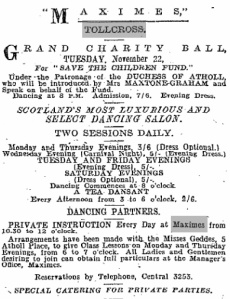 There were heightened concerns over dance-halls in Scotland during the interwar period, which were linked to fears over growing immorality. Several cases were brought during this period over the use of female dance partners, who could be hired for an evening, most notably the case involving immoral earnings at the Kosmo Club during the 1930s. Yet, Maximes too was to attract police involvement when it was found to be offering private leisure activities to queer men, which involved soldiers stationed at a local barracks.
There were heightened concerns over dance-halls in Scotland during the interwar period, which were linked to fears over growing immorality. Several cases were brought during this period over the use of female dance partners, who could be hired for an evening, most notably the case involving immoral earnings at the Kosmo Club during the 1930s. Yet, Maximes too was to attract police involvement when it was found to be offering private leisure activities to queer men, which involved soldiers stationed at a local barracks.
You will notice the large number of bars, existing prior to the change in law in 1980, that were not specifically catering for queer Glaswegians, but with a little discretion and no shortage of confidence one might meet a potential lover. The Top Spot bar was frequented by television and theatre professionals, due to its proximity to the Theatre Royal and TV studios, and attracted a fair number of gay men and women. The Strand Bar filled a site on Hope Street which remained ‘gay’ for 40 years. Interviewees told me that The Strand was ‘wholesome’, but if you preferred a more delicate bar then you would head to the bar situated inside the The Royal Restaurant. Those of middle-class origins, or pretensions, might head for the Close Bar at the Citizens’ or for a coffee in the coffee bar of the Central Hotel.
A similar situation was evident in Edinburgh, Aberdeen and Dundee, with certain bars offering a discreet environment for women and men seeking interactions with member of their own sex. There were other locations that didn’t advertise themselves as exclusively gay but did attract and appreciate a large gay customer base, such as the Winter Green Cafe at the People’s Palace on Glasgow Green, Glasgow. Glasgow Green has a long and colourful history. Throughout the late 19th and early 20th centuries the police would station officers close to (and sometimes amongst) the ‘dense shrubbery’ adjacent to Nelson’s Monument (now long gone – the shrubbery not the monument as you can see below) in the hope of catching people ‘in the act’. If it was a mixed sex couple, then in all likelihood you would sent off after some stern words, but gay men were not so fortunate as many were prosecuted for homosexual offences resulting from clandestine, and probably terribly brief, engagements on the Green.
Similarly in Edinburgh, locations such as Calton Hill were frequented by men, in particular, seeking same-sex intimacies.
By the 1980s, we see the emergence of venues which are catering specifically for non-hetersexual punters. Some of the oldest in Glasgow being, The Waterloo, The Court Bar, Vintners, Squires, Austins, and Bennets (most of which are now defunct). In Edinburgh certain venues occupy a significant place in the queer history of the city: The Laughing Duck, Fire Island, and the Blue Oyster Club, for example. Below you’ll find some early adverts for some of these and other venues.
- The Drawing Room
- Maison Guy’s
- Club X added a little freshness to the scene
Feel free to get in touch with me (see the comment form beneath the maps) if you spot any errors or wish to suggest any place/space additions (with address if possible), or have any images to share.
**The ‘reviews’ included in venue listings on the map are primarily from: SMG News, Gay Scotland (magazine), and Gay Times.**
Copyright © Jeff Meek 2013-2023 No part of this site, [QueerScotland.com], may be reproduced in whole or in part in any manner without the permission of the copyright owner.
All Rights Reserved.


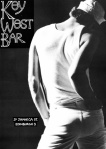
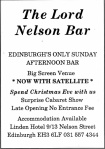


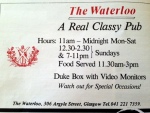
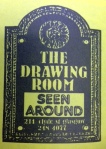

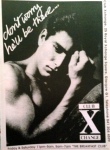

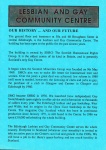

Pingback: From PhD to Print: An Emotional Journey | That Class of Men